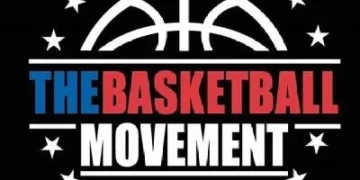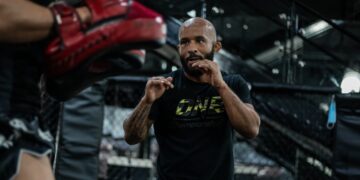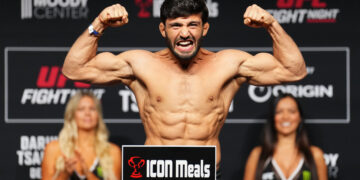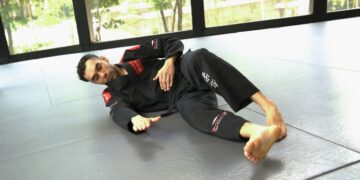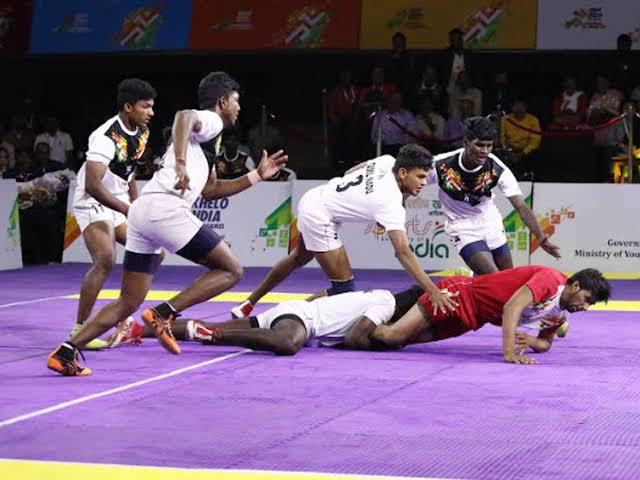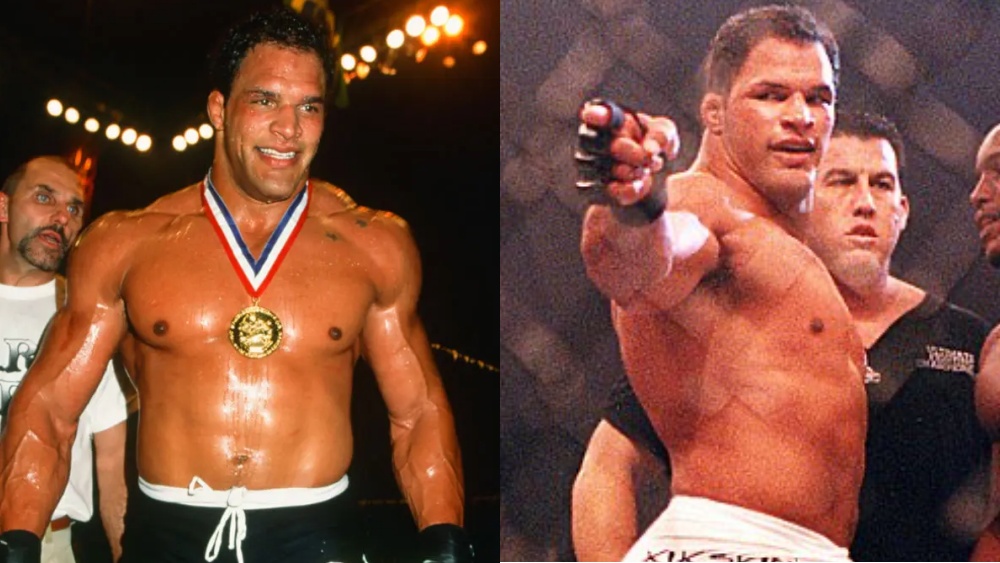
Mark Kerr, nicknamed “The Smashing Machine,” was one of the most dominant forces in the early days of mixed martial arts. A decorated wrestler, submission grappler, and tournament champion, he helped shape the foundation of the sport. But his story was never just about the wins in his life. He also struggled with addiction, personal demons, and the immense pressure that came with being a pioneer in a sport that was brutal in its early days. Now, with the upcoming film ‘The Smashing Machine’ starring Dwayne Johnson, Kerr’s legacy is being reintroduced to a new generation of fight fans.
From Wrestling To Combat Sports
Born in Toledo, Ohio, in 1968, Mark Kerr’s athletic path began with wrestling. Competing for Syracuse University, he became a standout collegiate wrestler known for his relentless pace and raw strength. His wrestling success carried over to the world of submission grappling, where he earned multiple ADCC World Championship titles and solidified himself as one of the most feared heavyweights of his time.
This background gave him the perfect foundation for MMA. In the mid-1990s, as the sport was still figuring out its identity, Kerr entered the cage with a unique combination of technical wrestling skill, grappling dominance, and overwhelming physical presence.
The Rise Of The Smashing Machine
Kerr’s nickname was well earned. He stormed through early UFC tournaments, winning two heavyweight tournaments in convincing fashion. His reputation only grew as he transitioned to PRIDE Fighting Championships in Japan, where he became one of the sport’s marquee attractions. In those days, the rules were limited, the competition was wild, and Kerr was often the most intimidating man in the arena.
With his crushing top control, explosive takedowns, and ability to smother opponents on the ground, Kerr became the prototype of the modern heavyweight grappler. He wasn’t just beating people, he was literally dominating them.
The Dark Side Of Glory
But Kerr’s dominance came at a cost. Behind the victories were constant battles with painkiller addiction, depression, and the emotional toll of fighting in an unregulated sport. His struggles were laid bare in the 2002 HBO documentary The Smashing Machine: The Life and Times of Extreme Fighter Mark Kerr. The film shocked fans by showing a side of MMA they weren’t used to seeing: a fighter vulnerable, broken, and human.
Kerr became a symbol of the hidden costs of combat sports, proof that the toll of fighting wasn’t only physical. His story was as much about survival outside the cage as it was about triumph inside it.
Why Kerr Still Matters
Even though his MMA record eventually became mixed, Kerr’s legacy endures for several reasons:
- Pioneer Of The Heavyweight Grappler Style: He proved that wrestling could dominate in MMA when combined with submission awareness and proper conditioning.
- Grappling Icon: His multiple ADCC championship titles cement him as one of the greatest submission grapplers of his generation.
- A Human Story: His public struggles with addiction and pressure made him one of the first fighters to expose the darker realities of being a professional martial artist.
Today, many of the discussions around fighter health, mental well-being, and long-term support systems echo lessons first highlighted by Kerr’s journey.
The Smashing Machine (2025): A Story Retold
Kerr’s story is now being brought to the big screen in The Smashing Machine, a biopic directed by Benny Safdie and starring Dwayne Johnson as Kerr. The film explores not only his ferocious dominance in the cage but also his private struggles with addiction and relationships.
Early previews suggest the movie will shine a spotlight on the price of greatness in a sport that was still raw and unregulated during Kerr’s time. The casting of Johnson, one of the most recognizable figures in entertainment, has already drawn attention from outside the MMA community, signaling that Kerr’s story will reach beyond fight fans and into mainstream culture.
Final Thoughts
Mark Kerr’s life is a mix of triumph and tragedy. He was a champion, a pioneer, and one of the most feared heavyweights of his era. But he was also a man fighting silent battles that many never saw. The upcoming film offers a chance to revisit his story with fresh eyes, not just as a tale of dominance, but as a cautionary and deeply human story about the cost of being “The Smashing Machine.”
FAQ: Mark Kerr & His Legacy
Q: Why Was Mark Kerr Called “The Smashing Machine”?
A: Because of his aggressive, overwhelming style. He would use wrestling takedowns and top pressure to smash through opponents with little resistance.
Q: What Were Kerr’s Biggest Accomplishments?
A: He was a two-time UFC tournament winner and a four-time ADCC World Champion, winning both his weight division and the absolute division.
Q: Did Mark Kerr Fight In PRIDE?
A: Yes. Kerr was one of PRIDE FC’s early heavyweight stars, competing in Japan during the promotion’s peak years.
Q: Why Is A New Movie About Him Important?
A: Because it reintroduces his story to new generations, showing both the glory and the struggles of one of MMA’s most important pioneers.
You may also like:
What Is The Southpaw Stance? The Ultimate Guide for Boxing, Muay Thai, And MMA
Low leg kicks are one of the most under-appreciated weapons in striking arts. They quietly erode an opponent’s mobility, set the pace, and often serve as fight finishers. In Muay Thai, kickboxing, and MMA, a…
In mixed martial arts (MMA), striking often gets the spotlight, but grappling quietly serves as one of the most important foundations of the sport. Fighters with strong grappling backgrounds control where the fight takes place,…
In combat sports, the way a fighter stands can change everything about how a match unfolds. Stance determines balance, power, and angles of attack. Among the many stances, the southpaw stance is often described as…
Mixed Martial Arts, or MMA, is often seen as the ultimate test of a fighter’s skill. It combines striking, grappling, and strategy into one dynamic sport. But behind every highlight reel knockout or submission win…
In martial arts, improvement does not come only from sparring or drilling techniques. Another powerful tool for growth is watching fight replays. Whether its a professional bout streamed worldwide or a recorded sparring session in…
Sparring is one of the most important parts of martial arts training. Whether you practice boxing, Muay Thai, Brazilian Jiu-Jitsu, or MMA, sparring helps you test your techniques in a realistic setting. It sharpens timing,…
Every sport has its underdog stories, but in boxing, those moments feel especially powerful. One punch, one night, and one fighter’s belief in themselves can flip expectations upside down. In the modern era, from the…
Starting Brazilian Jiu-Jitsu is one of the most rewarding decisions you can make, but it all begins with picking the right gym. The place you choose will shape not just your technical progress, but also…
Teamwork can make the difference between success and struggle in the workplace. Many companies turn to team-building workshops, leadership retreats, and communication courses to strengthen collaboration. But one powerful and often overlooked way to develop…
Muay Thai is often called the art of eight limbs, combining punches, kicks, elbows, and knees into a complete striking system. Among these weapons, the knee is one of the most powerful and effective tools,…
Few things in boxing are as intriguing as an orthodox fighter squaring off against a southpaw. The clash of stances often produces unusual rhythms, unexpected openings, and moments of brilliance. Because most fighters grow up…
Opening the closed guard is one of the most fundamental and often frustrating skills for beginners in Brazilian Jiu-Jitsu. If you’re stuck inside someone’s guard, your movements and offense strategies are completely limited. This article…




